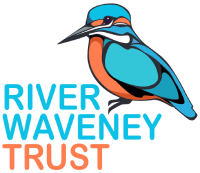Responsible River Access
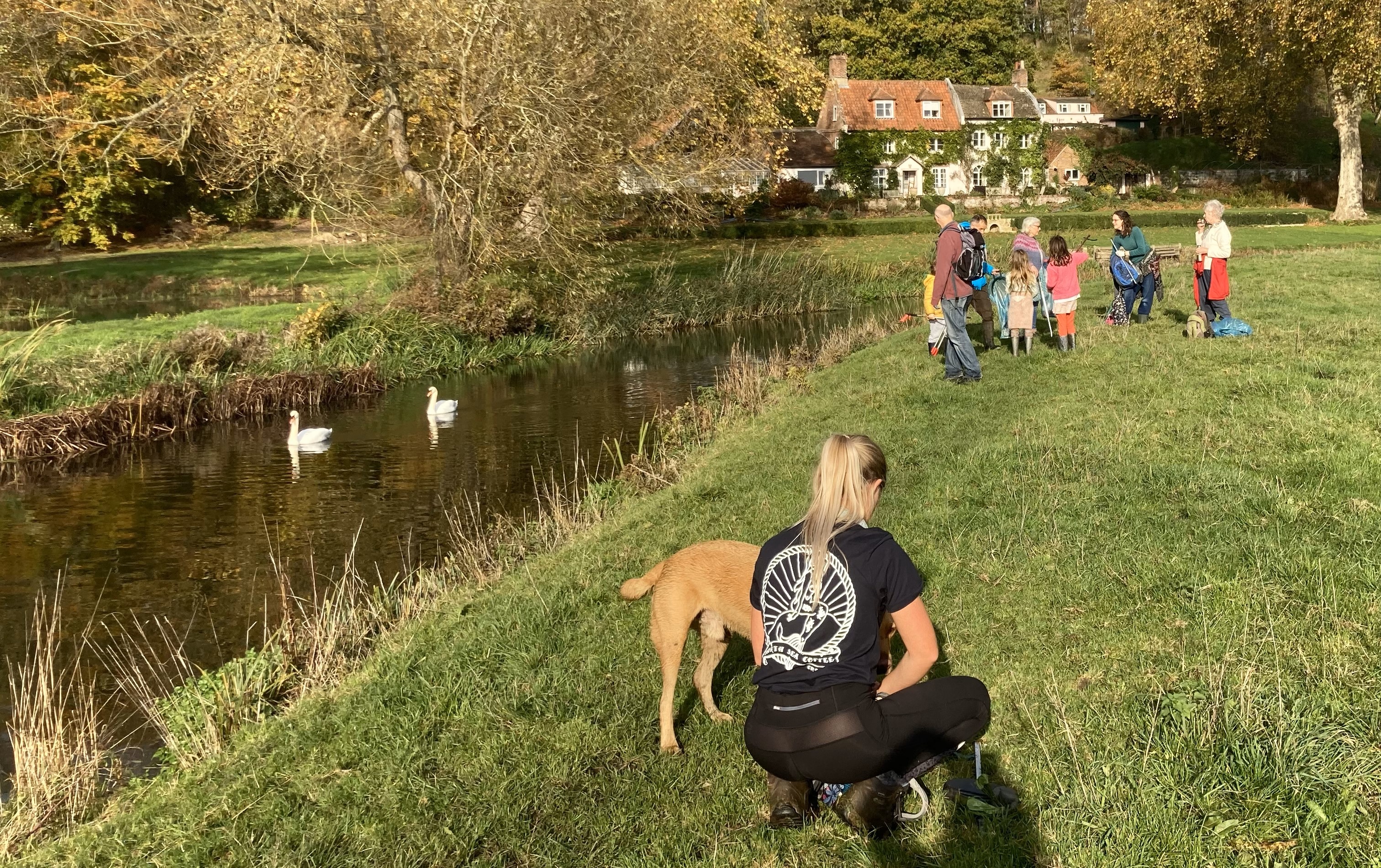
Improving biodiversity, water quality & access for all
Many of us who love the river instinctively know that time spent there is good for us. The health benefits of ‘blue spaces’ were formally identified over ten years ago when researchers at the University of Sussex asked 20,000 people to periodically send them details of how they were feeling. From over a million responses, they found that people were overwhelmingly happiest when close to water. Since then, evidence has shown that spending time in or by water lowers the risk of stress, anxiety, obesity, cardiovascular disease, and premature death.
Those familiar with the Waveney often love it and wish to protect it. This project aims to connect all river users to help us understand it better. Pollution, poor management, drought stress, and lack of habitat in the channel structural diversity can threaten water quality, wildlife, and people. Those who already use or are often nearby the river are perfectly placed to pinpoint where action is required to tackle pollution, poor management, invasive species, drought stress or lack of habitat.

River Wardens priority habitat training with British Freshwater Association March 2023
River Wardens
Our River Wardens scheme has entered its second year, and we are delighted to continue this work. Wardens regularly survey the river for various signs of stress and record their findings on our purpose-built database via their mobile phones.
Wardens report river obstructions, such as fallen trees or excessive vegetation growth. We work with landowners to maintain paddler access and the benefits of in-channel wood. Trees are manoeuvred parallel to the bank and held in positions using stakes. They help protect the bank, enhance habitat in the channel, and create variety in the water flow, which different species need to thrive. Adding wood to rivers is essential to a river’s ecosystem, a conservation technique now used worldwide conservation technique to restore health to rivers and diversify the habitat.
Training wardens to understand what makes a healthy river and how to record findings systematically helps us plan future projects and monitor changes year after year.

Volunteer Kate Jackson helping to survey in Ellingham Dec -2022
Valuing blue spaces
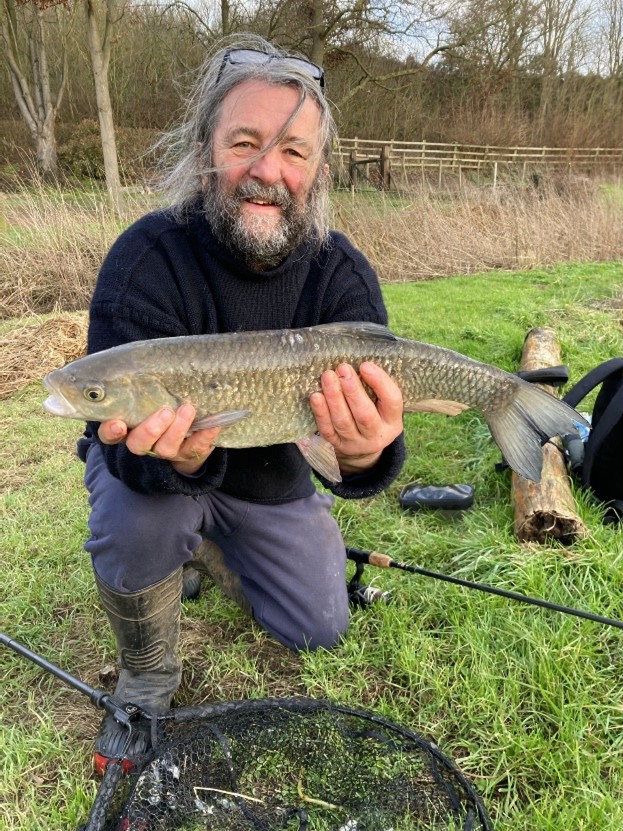
Angler and River Warden, Michael Copperwheat showing off his catch
Access along the river for recreation is great for our well-being but also vital if we are to detect when things go wrong. Anyone that enjoys fishing, paddling, riverside walking, wild swimming, and wildlife watching can reciprocate the benefits they experience by contributing to our work. Remember, wildlife has an intrinsic value beyond what it provides us. Get in touch to help us protect and enhance this most precious freshwater environment.
Conservation action
We work with Norfolk Non-Native Species Initiative and the Environment Agency (EA) to eradicate floating pennywort on the Waveney.
Following the EA’s large-scale clearance and chemical intervention to hold back the weed, this winter, we are continuing to run weekly floating pennywort control work parties. Our role is to map and remove plant fragments before they can take hold again this summer. At peak times, floating pennywort has a rapid growth rate of 20 cm per day, easily able to outcompete and smother native wildlife.
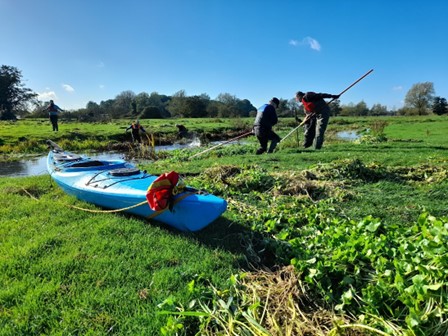
Floating pennywort work party - autumn 2022
Berm construction and managing fallen trees
Depending on the scale of the job, volunteers or contractors help us manage in-channel wood. Pinning trees parallel to the riverbank can protect it from erosion without blocking the channel. Managed trees retain their habitat value and are protected from being otherwise removed by well-meaning landowners.
Secured using wooden stakes, fallen trees can also be used to construct berms. Berms are very beneficial as they can re-meander the river, reinstate more natural processes, create more habitat for freshwater species, and help create a new lower-level floodplain.
Introducing woody material into the river creates the perfect habitat for in-channel species, such as invertebrates and fish species, by providing refuge from faster flows and predators.
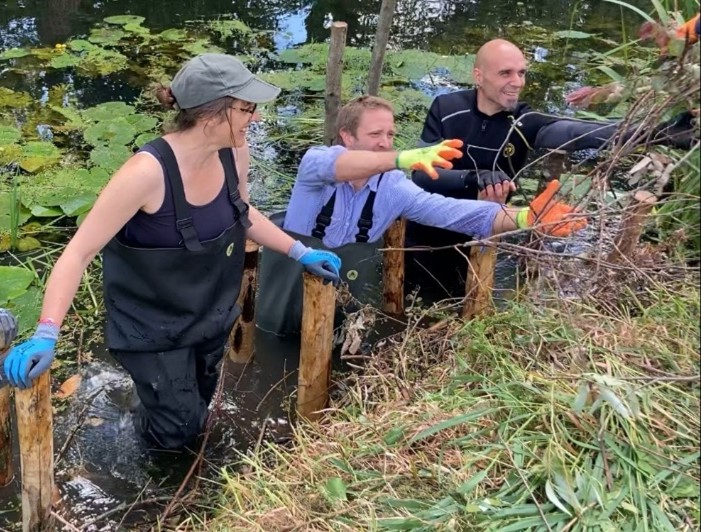
Removing excess vegetation from the channel
Last year’s River Wardens identified excessive vegetation, such as floating grass, as a major problem on the river for access and potential water quality. We are working with the Environment Agency to explore ways to remove areas of excessive plant growth to maintain water movement and prevent dead zones from occurring in affected areas.
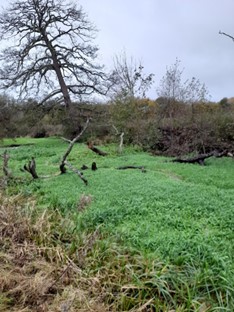 | 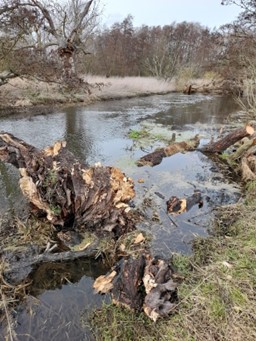 The same tree later in winter we have secured to the bank. March 2023 |
Why are duckweed and floating grass a problem?
Floating grass and duckweed occur naturally and in smaller areas and can benefit the environment, providing shade and mopping up excess nutrients in the water. However, vast mats of surface vegetation indicate excess nutrients in the system. It obstructs access and can cause wildlife problems by blocking light to other aquatic plants; for example, some areas on the Waveney accumulated large surface duckweed 5 inches thick in 2022. In such extreme cases, oxygen cannot pass across the surface to enter the channel, and deoxygenated water becomes noxious to many aquatic animals.
Removal of in-channel vegetation will be a way to capture excess nutrients. We have joined forces with the University of Nottingham to explore the possibility of using harvested duckweed as a poultry food.
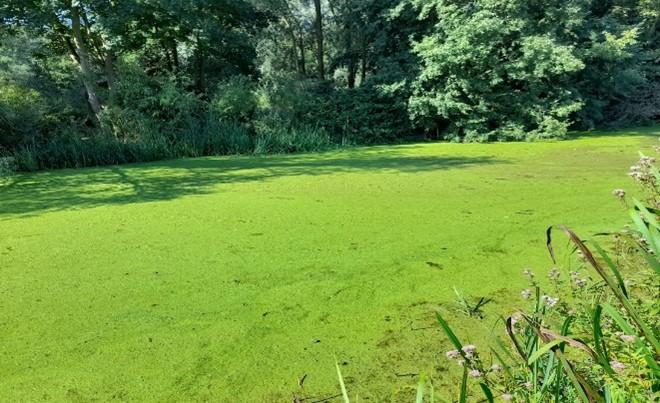
An extensive area of duckweed Falcon Meadow, Bungay - Aug 2022
Please download our flier on advice for landowners on managing fallen trees in the river.
For more details on the project, to volunteer or to report a fallen tree, please get in touch with our Rivers Project Officer: Katie Utting
Tel: 07810 214831 Email: katie@riverwaveneytrust.org
The River Access Project developed from our pilot project, Canoe Access and Biodiversity, funded by The Green Recovery Challenge Fund and Essex & Suffolk Water. Details of the project report for the pilot can be downloaded here.
Thanks to Anglian Water and their Invasive Species Fund (delivered through CCF)



Also, thanks to Essex and Suffolk Water, The Canoe Foundation, The Geoffrey Burton Trust and The Paul Bassam Trust,
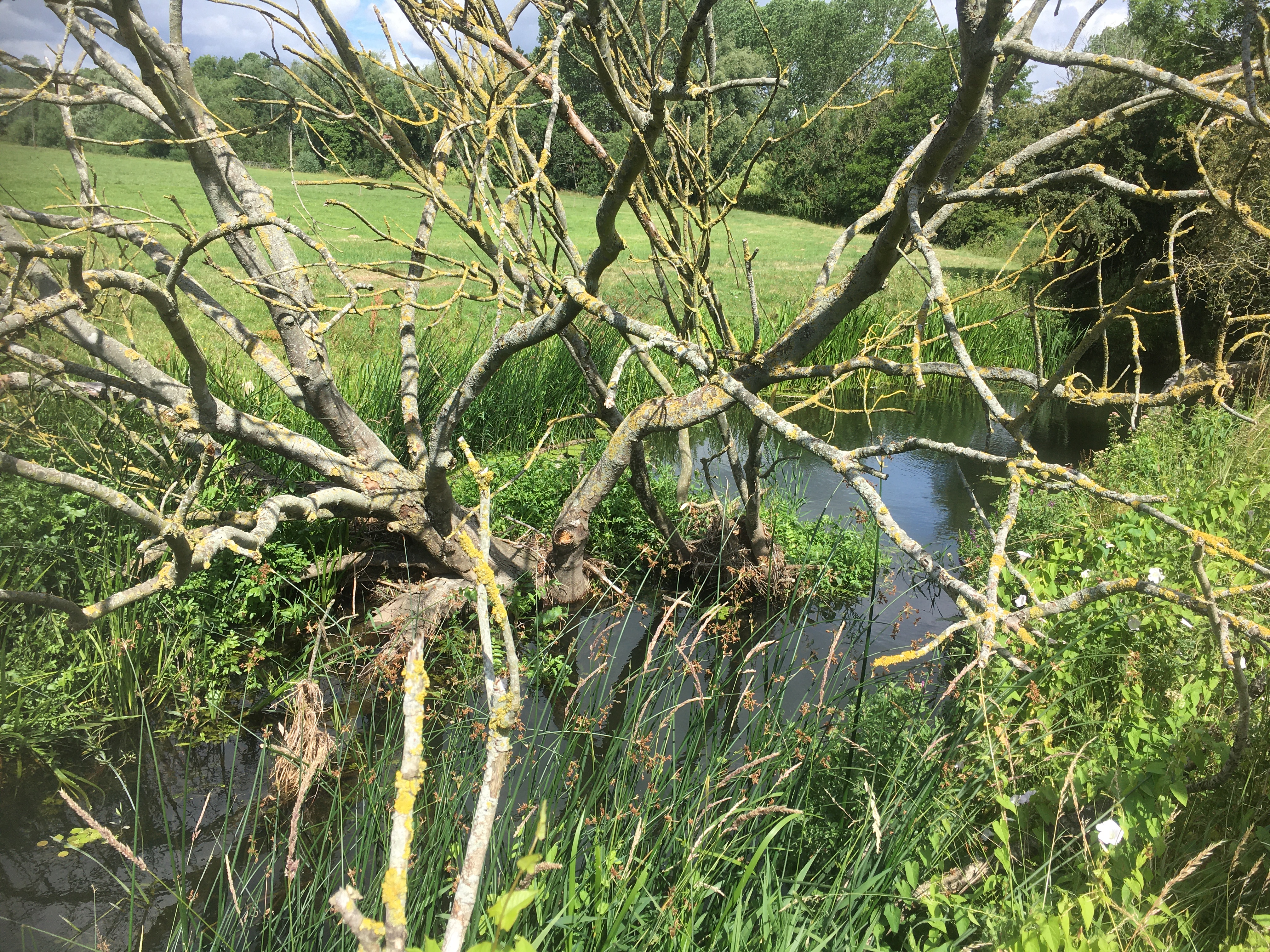
This is a tree that has fallen naturally into the river channel. You can see the new habitats that have formed. Here rare plant species were seen sheltered by the fallen branches. More invertebrates are also found where trees have fallen, feeding more fish, bringing with them animals such as kingfishers.
These fallen trees also provide the perfect refuges for young fish to hide from predators and floodwaters. Where the channel is narrower it speeds the water through the gap, cleaning sediments from gravel and if the flow is fast enough, mixing oxygen from the air into the water and improving oxygenation for everything living under the water.
You can also see that that paddle access is obstructed and where it would be possible to cut a canoe/kayak sized channel into the fallen tree by removing some of the branches.
